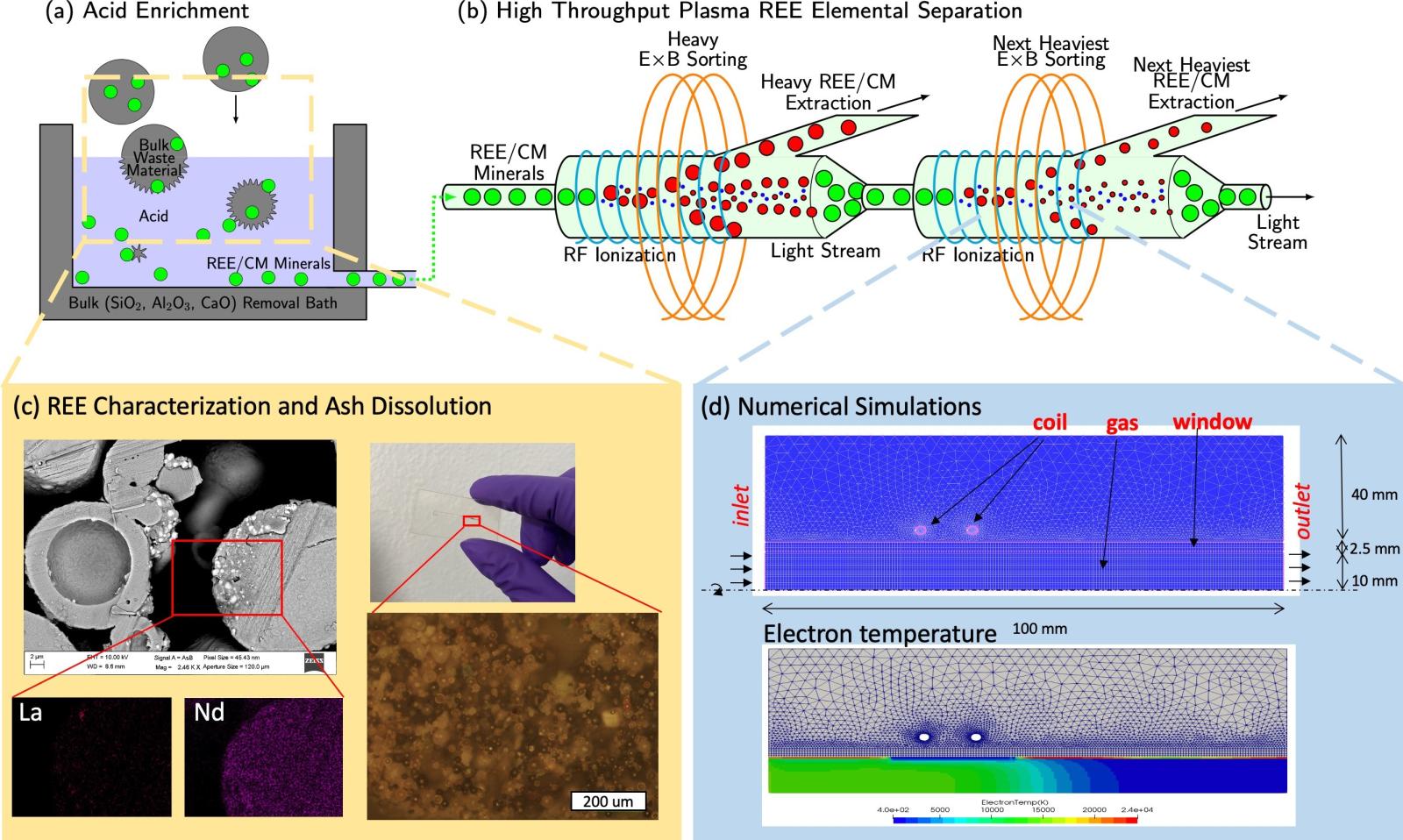Enabling the Sustainable Energy Transition: Economic Recovery of Rare Earth Elements
Enabling economic growth while limiting warming to 2°C by 2050 urges the transition of our current carbon-intensive energy infrastructure to one that is sustainable at an unprecedented scale and pace. Sustainable energy transition technologies (SET), including renewable electricity generation, grid-scale energy storage, vehicle electrification, and grid security technology must be adopted broadly. Economic deployment of SET technologies, however, is hindered by the high material costs of rare earth elements (REEs). Currently, REEs are recovered by leaching ore from open-pit mining, a process that is energy intensive (~50 to 100 GJ/ton REE), environmentally- malignant (open-pit mines, acid-wastes, etc.), and viable economically only in regions with concentrated ore (e.g., ~97% from China). Availability of REEs is the bottleneck in the global transition towards sustainable energy. To sustain the growing industrial, economic, and environmental needs of the world, new REEs resources and technologies are needed. This project identifies coal and coal-based materials, including fly ash, as a potential resource for REEs recovery. Importantly, initial estimates show that REEs contained in U.S. fly ash alone could satisfy annual global demand. The project develops a novel hybrid acid-plasma technology to recover REEs from fly ash effectively and in an environmentally-benign manner.

Research Outputs
Project Team
Wen Song, Assistant Professor, Petroleum and Geosystems Engineering
Thomas C. Underwood, Assistant Professor, Department of Aerospace Engineering and Engineering Mechanics
Donald J. DePaolo, Visiting Professor, Department of Petroleum and Geosystems Engineering; Chancellor’s Professor, University of California, Berkeley; Senior Advisor to Energy Sciences, Lawrence Berkeley National Lab
Laxminarayan L. Raja, Robert L. Parker Professor, Department of Aerospace Engineering and Engineering Mechanics, Center for Aeromechanics Research, Texas Materials Institute
Ashok Sekar, Research Associate, LBJ School of Public Policy, National Renewable Energy Laboratory
Jay L. Banner, F. M. Bullard Professor, Department of Geological Sciences, Environmental Science Institute

